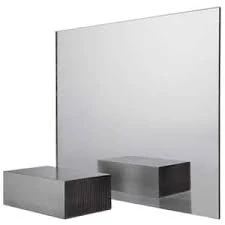

The Aesthetic and Functional Value of Gray Tinted Glass
In the realm of contemporary architecture and interior design, materials play a crucial role in defining the aesthetics and functionality of spaces. Among these materials, gray tinted glass emerges as a popular choice, offering a harmonious blend of style, privacy, and energy efficiency. This article explores the various dimensions of gray tinted glass, examining its applications, benefits, and the underlying reasons for its growing popularity in modern design.
Gray tinted glass is characterized by its subtle coloration, which provides a sophisticated look while allowing for a moderate level of light transmission. Unlike clear glass, which can lead to harsh glare and increased heat gain, gray tinted glass softens the intensity of sunlight, creating a more comfortable indoor environment. This quality makes it particularly attractive for large windows and facades in commercial buildings, where an abundance of natural light is often desired, but without the accompanying glare and heat.
One of the standout features of gray tinted glass is its ability to enhance privacy. In urban settings, where buildings are often in close proximity, clear glass can leave occupants feeling exposed. In contrast, gray tinted glass acts as a visual shield, obscuring the view from the outside while still allowing for natural light to filter in. This balance of openness and seclusion is highly valued in both residential and commercial designs, contributing to a sense of security without sacrificing daylight.
Energy efficiency is another significant advantage of gray tinted glass
. By reducing solar heat gain, it lessens the reliance on artificial cooling systems, which can lead to considerable energy savings. This eco-friendly characteristic aligns with the growing movement towards sustainable building practices. Architects and developers increasingly prioritize materials that contribute to energy-saving initiatives, and gray tinted glass fits this criterion well. Consequently, its use is becoming more widespread in green building projects aiming for LEED certification and other sustainability benchmarks.
The aesthetic appeal of gray tinted glass cannot be overstated. Its muted tone complements a variety of architectural styles, from sleek modern structures to more traditional designs. The glass can be incorporated into windows, doors, and even partitions, allowing designers the flexibility to create visually striking elements throughout a space. When paired with other materials such as wood, metal, or stone, gray tinted glass adds a layer of sophistication and modernity, making it a favored choice among designers and homeowners alike.
Furthermore, gray tinted glass is available in various thicknesses and treatments, including tempered and laminated versions, enhancing its versatility. This adaptability means that it can cater to different needs, from safety concerns to enhanced thermal insulation. For example, laminated gray tinted glass not only provides the benefits of tinting but also adds an extra layer of protection against breakage, making it ideal for areas where safety is paramount.
Finally, as consumer preferences evolve towards personalization and uniqueness in design, gray tinted glass fills a niche that balances elegance and practicality. Its minimalist aesthetic allows it to blend seamlessly into any design narrative, creating spaces that are both functional and visually appealing.
In conclusion, gray tinted glass is more than just a building material; it represents a forward-thinking solution that addresses contemporary design challenges. With its myriad benefits, including glare reduction, increased privacy, energy efficiency, and aesthetic versatility, it is no wonder that gray tinted glass is gaining traction in architectural circles. As we move toward a future where sustainability and style go hand in hand, gray tinted glass is poised to play a pivotal role in shaping the environments we inhabit.